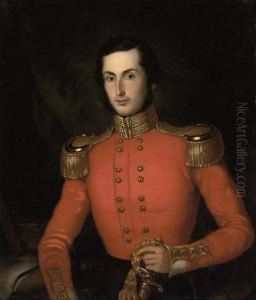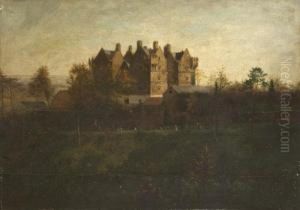Samuel Uvedale Paintings
Samuel Uvedale was an English artist active during the 17th century, a period characterized by significant changes in the art world, from the late Renaissance into the early Baroque era. Born in 1629, Uvedale lived through the tumultuous times of the English Civil War and the Restoration of the Monarchy, contexts that influenced the art and culture of his era profoundly. However, detailed documentation about his early life, education, and artistic training is scarce, which is not uncommon for artists of this period, as records were often not systematically kept or have been lost over time.
Uvedale's work is lesser-known compared to his contemporaries, partly due to the overshadowing fame of artists like Anthony van Dyck, who dominated the English art scene with his portraiture. Despite this, Uvedale contributed to the artistic landscape of his time, possibly in the realms of painting or engraving, mediums that were prominent during his lifetime. His style and specific contributions to art remain difficult to pinpoint due to the limited surviving works attributed to him, or detailed scholarly analysis of his oeuvre.
The period in which Uvedale worked was one of great artistic diversity and innovation. The 17th century saw the rise of genre painting, landscape, and still life, alongside the continued popularity of portraiture. Artists were exploring new techniques, compositions, and themes, often influenced by the socio-political climates of their respective countries. In England, the Restoration in 1660 brought about a resurgence in the arts and culture, following the more austere Commonwealth period. It was an era that celebrated opulence and the Baroque style, which could have influenced Uvedale's artistic output.
Samuel Uvedale passed away in 1696, leaving behind a legacy that, while not widely recognized today, contributed to the rich tapestry of 17th-century English art. His life and work serve as a reminder of the many artists whose contributions have been overshadowed or lost to history, but who played a role in the development of artistic movements and styles. Further research and discovery may one day bring to light more about Uvedale's contributions to the art world, offering a fuller picture of his impact and the context in which he worked.

